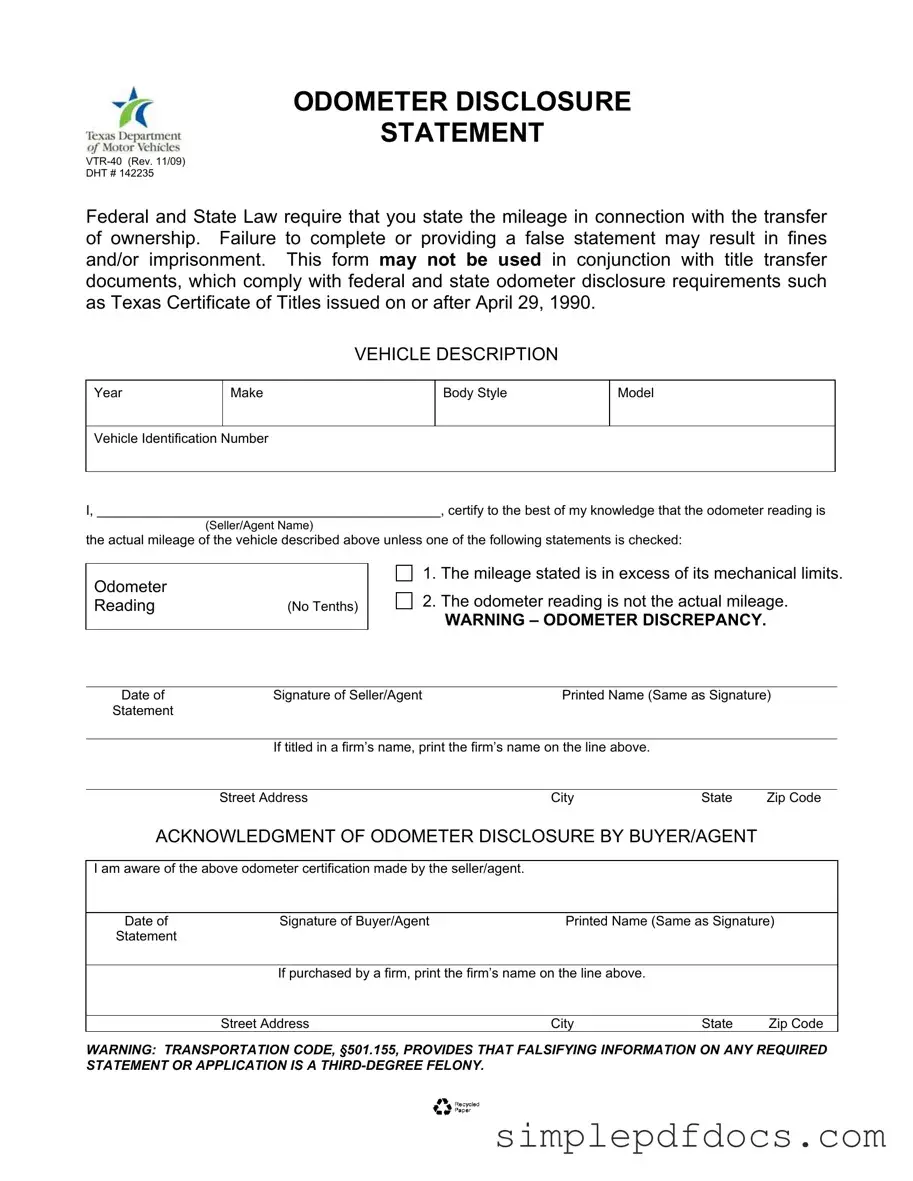The Texas Odometer Statement form, officially known as VTR-40, plays a critical role in the transfer of vehicle ownership within the state. This form ensures that both buyers and sellers provide accurate information regarding the vehicle's mileage, a requirement set forth by federal and state laws. When completing this document, sellers must disclose the vehicle's odometer reading and certify that it reflects the actual mileage unless specific exceptions apply. These exceptions include scenarios where the mileage exceeds mechanical limits or where the odometer reading is not accurate. Additionally, the form includes an acknowledgment section for the buyer, confirming their awareness of the odometer certification made by the seller. It is important to note that this form cannot be used in conjunction with title transfer documents that meet federal and state odometer disclosure requirements, particularly for titles issued after April 29, 1990. Failure to provide truthful information on this form can lead to serious consequences, including fines and potential imprisonment, as outlined in the Transportation Code. Thus, understanding the Texas Odometer Statement is essential for anyone involved in the buying or selling of vehicles in Texas.
